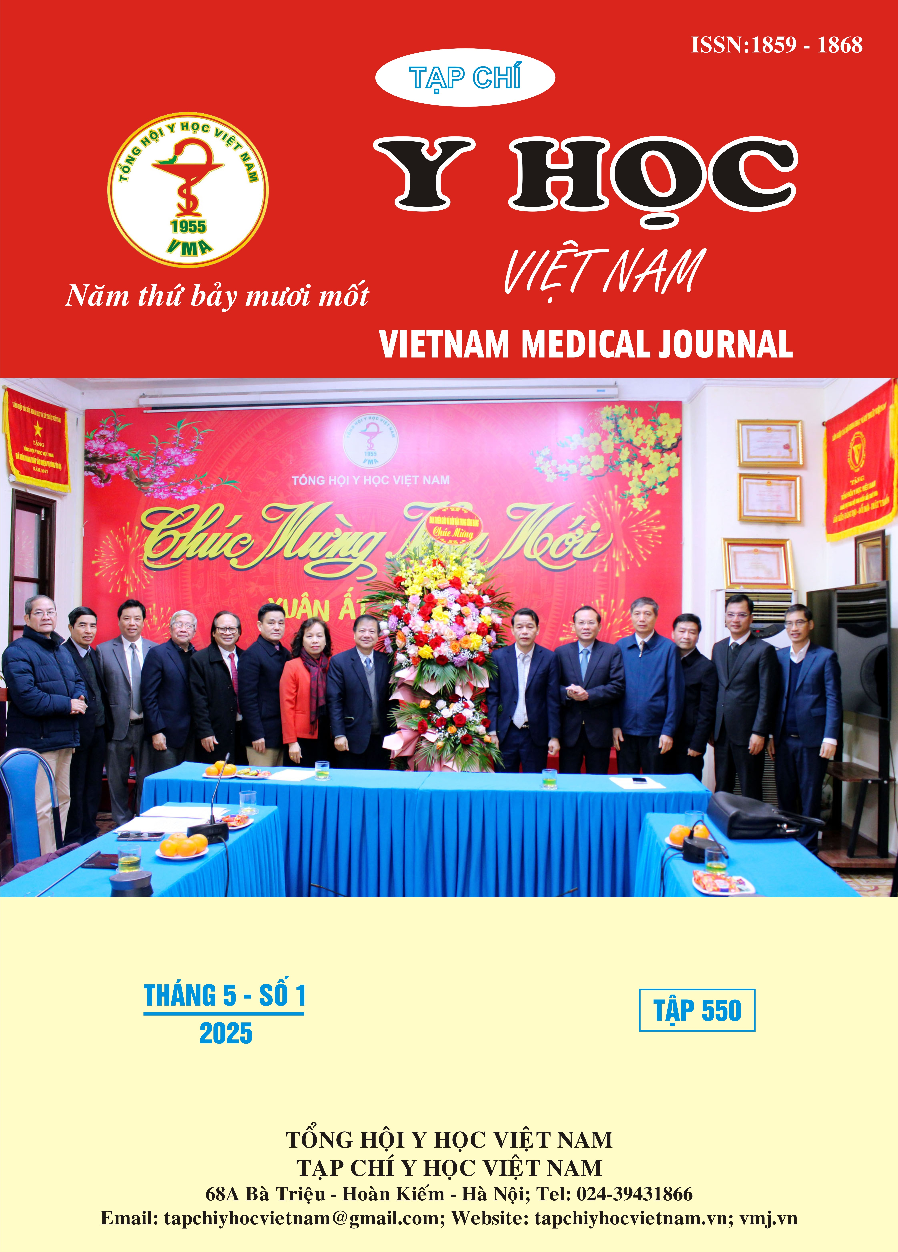EFFECT OF THE CHAIR OTOLITH REPOSITION MANOEUVRE ON DAILY ACTIVITIES OF PAROXYSMAL POSITIONAL BENIGN VERTIGO PATIENTS
Main Article Content
Abstract
Patients and methods: 120 patients came to Tam Anh General Hospital in Hanoi for dizziness and imbalance, diagnosed with BPPV and treated from January 2023 to September 2023. All patients were clinically examined by screening vestibular tests and specialized vestibular tests. BPPV was diagnosed based on the international classification of vestibular disorders by the Barany Association. Patients fully answered the DHI dizziness assessment questions at the time of diagnosis and after treatment. Results: There were 92 women (76.7%) and 28 men (23.3%). The average age of patients was 55.7 years (± 11.5). Posterior semicircular canal BPPV was the most common (70.4%), horizontal semicircular canal BPPV was 20.4% and anterior semicircular canal BPPV was 9.2%. After treatment, 91 patients had mild DHI scores, accounting for 75.8%, and only 2 patients had severe DHI scores (accounting for 1.7%). After treatment, in each group, the items scores were mostly classified as mild (70.8% in the physical group, 85% in the emotional group, and 81.7% in the functional group), with very few patients having severe degrees. Conclusion: Otolith repositioning maneuvers on a TRV chair was effective in the treatment of BPPV after three interventions with one-week intervals, significantly improve the DHI scores of BPPV patients in terms of physical, emotional and functional aspects.
Article Details
Keywords
Benign paroxysmal positional vertigo (BPPV), Otolith repositioning maneuver (ORM), Dizziness Handicap Inventory (DHI)
References
2. West N, Hansen S, Møller MN, Bloch SL, Klokker M. Repositioning chairs in benign paroxysmal positional vertigo: implications and clinical outcome. Eur Arch Otorhinolaryngol. 2016 Mar;273(3):573-80. doi: 10.1007/s00405-015-3583-z. Epub 2015 Mar 7. PMID: 25749489.
3. Jacobson GP, Newman CW. The development of the Dizziness Handicap Inventory. Arch Otolaryngol Head Neck Surg. 1990 Apr;116(4):424-7. doi:10.1001/archotol.1990.01870040046011. PMID: 2317323.
4. Alcione Botelho Pereira, Juliana Nunes Santos, Fernando Madalena Volpe. Effect of Epley’s maneuver on the quality of life of paroxismal positional benign vertigo patients Braz J Otorhinolaryngol. 2010;76(6):704-8.
5. Castro ASO, Gazzola JM, Natour J, Ganança FF. Brazilian version of the Dizziness Handicap Inventory (original title: Versão brasileira do Dizziness Handicap). Pró-Fono Revista de Atualização Científica, Barueri (SP), v. 19, n. 1, p.97-104, 2007.
6. Saxena A, Prabhakar MC (2013) Performance of DHI Score as a Predictor of Benign Paroxysmal Positional Vertigo in Geriatric Patients with Dizziness/ Vertigo: A Cross-Sectional Study. PLoS ONE 8(3): e58106. doi:10.1371/ journal.pone.0058106.
7. Cengiz D. U., Çolak S.C., Tan M. , Demir İ., Çalışkan Demir A., Bayındır T., The Effect Of Repositioning Maneuvers On Quality Of Life, Vertigo Symptoms And Dizziness In Patients With Benign Paroxysmal Positional Vertigo. KBB-Forum 2023;22(3):167-174.
8. Whitney SL, Herdman SJ. Avaliação Fisioterapêutica da hipofunção vestibular. In: HERDMAN, S.J. Reabilitação vestibular. 2nd ed. Rio de Janeiro: Manole;2002. p. 329-369.
9. Chaure-Cordero, M.; Garrote-Garrote, M.; Esteban-Sánchez, J.; Morales-Chacchi, P.; Del Valle-Díaz, M.; Martin-Sanz, E. Comparison between Classical- and Rotational Mechanical-Chair-Assisted Maneuvers in a Population of Patients with Benign Paroxysmal Positional Vertigo. J. Clin. Med. 2024, 13, 3863. https://doi.org/10.3390/ jcm13133863.
10. Giardino D, Musazzi M, Perez Akly M, Cherchi M, Yacovino DA. A comparative study of two methods for treatment of benign paroxysmal positional vertigo in the emergency department. J Otol. 2021 Oct;16(4):231-236. doi: 10.1016/j.joto.2021.04.002. Epub 2021 May 3. PMID: 34548869; PMCID: PMC8438630.


